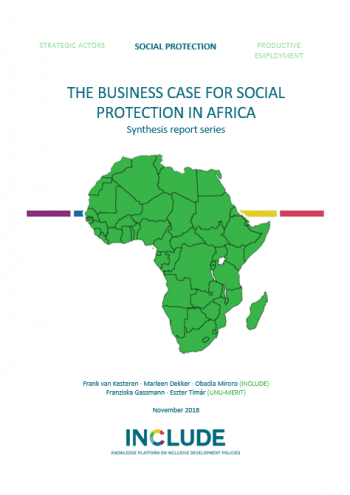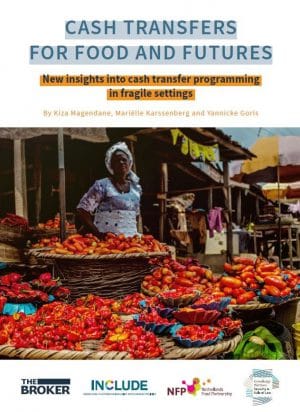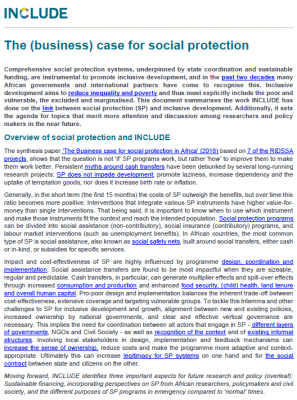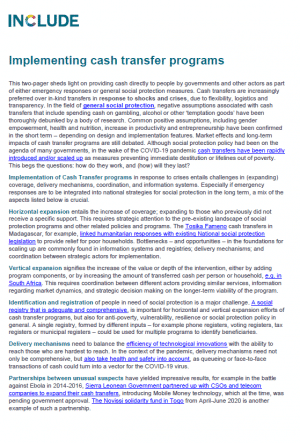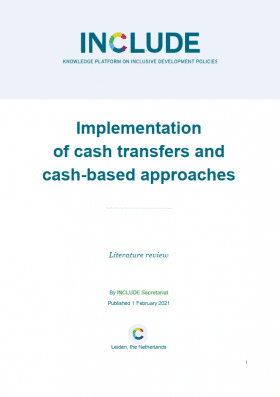
The COVID-19 pandemic has come to dominate economic and social policy making, in addition to public health. Cash transfers were on the top of the list of go-to social protection responses in many African countries in the early phases of the pandemic in 2020. The literature on cash transfers is vast, and it provides a nuance understanding of the impacts of cash transfers on recipients. However, there is still room for exploration when it comes to implementation of cash transfers and the differences between and within the different approaches.
This report pays specific attention to the implementation of cash transfers. The first chapter looks at the different types of cash-based approaches found in the literature, where cash transfers are an integral element of the intervention or at the heart of the programme, and it goes on to identify the different dimensions that play a role in the inclusiveness of CBAs. The second chapter looks at cash transfers as an implementation instrument, including delivery mechanisms, monitoring and spatial dimensions.
A general conclusion is that cash transfers are used in versatile ways, as add-on to other programming or as a key defining element of an intervention. The implementation informs to some extent the successes and inclusiveness, regardless of the type or design of programmes. Furthermore, the implementation of different delivery mechanisms poses specifc and sometimes hidden barriers for intended participants that can be addressed through monitoring and grievance redressing.
